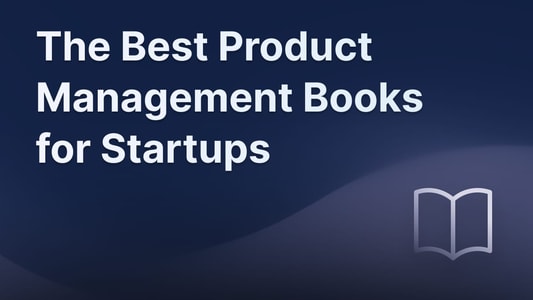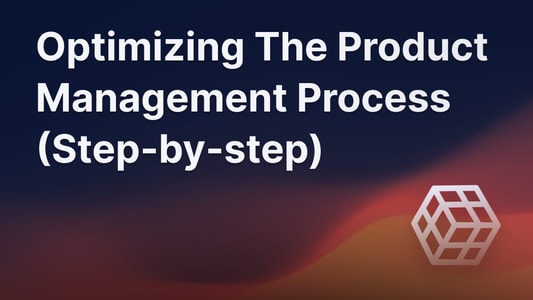Blog ComparisonsTop 10 Feature Voting Tools for SaaS Companies in 2024
Top 10 Feature Voting Tools for SaaS Companies in 2024
Choosing the right feature voting tool is crucial if you are looking to uncover the most impactful user-requested features. Our guide covers the top 10 tools of 2024, showcasing their benefits, limitations, and costs, so you can pick the perfect tool for your company.

🥇 Our top pick: Featurebase, the all-in-one feature voting & management tool, best value for money.
Prioritizing what to work on is one of the most important aspects for SaaS companies. There are hundreds of feature ideas in your backlog, but which ones will actually be impactful?
Luckily, feature voting can help you feel more confident that your planned features will be adopted by your users.
More importantly, voting tools help you effortlessly discover the deal-breakers - you'll easily find out why users are leaving & get an overview of everything they're looking for.
However, picking a great feature request software can be quite challenging, as the downsides only emerge when you start getting lots of feedback that is hard to manage.
In this article, we will give you a detailed overview of the top 10 feature voting tools for SaaS and help you pick the right one from the beginning. 👇
TL;DR - The Best Feature Voting Tools in 2024:
- Featurebase - All-in-one tool for feature voting, collecting and managing product feedback - best value for money
- Nolt - Very simple and affordable tool for feature voting, but limited management and insight features
- Canny - Great for larger enterprises who can afford more expensive software
- Frill - Simple design and lightweight widgets for feature voting
- Sleekplan - Most affordable pricing, limited features
- featureOS - Good for collecting feedback, poor for prioritizing it
- UserVoice - All-in-one feedback suite for enterprises
- UserSnap - Very customizable widgets, best for enterprise use
- Upvoty - Aged user interface but affordable
- FeedBear - Cheap feature voting tool with limited features
What to look for in a feature voting tool?
First, let's quickly cover some important aspects you should keep in mind when choosing a feedback tool for your company.
Here's what to look for:
- Automatic authentication: Users shouldn't be forced to sign up for a new account to upvote features. Great feature request tools let you automatically authenticate users with the account you already have with your app.
- Revenue sorting: Not all upvotes are equal. That's why it's important to look for the ability to sync your user data with the upvotes. This allows you to get an overview of who upvoted something and sort ideas by customer revenue potential and custom segments.
- User notifications: Closing the feedback loop is one of the most important parts of a feature voting tool. Look for tools that send email notifications to upvoters about the progress of their upvoted features. It's a bonus if they also offer a changelog.
- Follow-up questions: Try to find a tool that asks upvoters the importance, usage frequency, and urgency of their upvoted idea to get more context.
- Tools to manage feedback at scale: Many tools offer limited dashboards that don't enable you to stay on top of your user feedback when you're getting tens of requests every day. Look for bulk action and post-merging features to help with this.
- An intuitive interface: It should be intuitive to make sure your users don't get confused with complex or dated interfaces. This may result in lost feedback.
- Integrations: A great feature voting tool should plug into your workflow and connect with all the tools you already use. This can be Jira for task management, Intercom for pushing requests straight into your voting boards, or Slack for syncing release notes into the announcement channel..
- Widgets & seamless integration: To make it effortless for users to leave feedback and upvote features, it's important to look for tools that support widgets. You'd like to collect in-app feedback so users never have to leave your product page.
After all the features, it's also important to consider the price of the feature voting tool.
Let's jump into our hand-picked list of the 10 best feature voting tools that offer the best value for price, so you don't have to waste hours searching and comparing the tools yourself.
Top 14 Feature Voting Tools for SaaS Companies in 2024
1. Featurebase

Featurebase is one of the best feature voting tools on the market. It has a neat interface and many features optimized for understanding the importance of votes. To get the most out of your feedback it also supports public roadmaps and a changelog.
It comes with affordable pricing and a Free plan allowing unlimited feedback. You can set it up in minutes and always get quick help through live chat. ⚡️
Featurebase's key features:
- Feedback boards, changelog, and a roadmap
- Feature voting with follow-up questions
- Automatic login and single sign-on
- Sort feedback by upvoter monetary value
- Automated notification emails
- In-app widgets (see live demo)
- Surveys
- Prioritization frameworks
- Custom domain
- User segmentation
- API
- Over 6 + languages, including Spanish, German, French, etc.
Advantages of Featurebase:
- Intuitive interface - a neat and easy-to-use design for you and your users with gamified features like leaderboards to incentivize feedback
- AI duplicate post-detection - users & admins will see relevant similar posts before posting to reduce duplicates
- AI-powered search - always find that idea that you were looking for, even if you don't remember the exact wording
- Lots of customizations - have your boards look exactly the way you want by changing the colors, theme, text, and much more
- Replies and @ mentioning - intuitive comment section for lengthy discussions
Drawbacks of Featurebase:
- No HubSpot & Salesforce integrations (see existing integrations)
How much does Featurebase cost?
- Free Plan - unlimited posts, all basic features like a feedback board, roadmap, and changelog to take your product to the next level
- Growth Plan ($40/month) - 4 managers, all integrations and widgets, custom domain, and seamless user login
- Premium Plan ($124/month) - 8 managers, API, SSO, and user segmentation
All plans let you collect unlimited feedback, and you can try the paid ones with a 10-day free trial. See pricing here →
Featurebase reviews:
- Product Hunt - 4.9/5
Featurebase is one of the best feature voting tools for fast-growing startups. It allows you to capture and manage feedback without any unnecessary complexities while offering advanced features like user segmentation.
The onboarding is amazingly quick, with the automated migration from Trello helping you get set up in seconds.
Learn more here →
2. Nolt.io

Nolt is a lightweight feature voting tool that's best suited for small teams looking to collect feedback. However, it does not allow you to link user data to upvotes, so all votes are equal and there are no follow-up questions to measure the importance.
Nolt's key features:
- Feedback boards
- Upvoting and downvoting
- A roadmap
- Anonymous posting, commenting, and voting
- Password-protected boards
Advantages of Nolt:
- Simplicity (at the cost of many features)
- SAML 2.0 for enterprise
- Has over 10+ different translations
Drawbacks of Nolt:
- No admin dashboard
- No changelog for closing the feedback loop with users
- No duplicate post-detection system
- Only one widget
- No user segmentation
- No sorting feedback by customer revenue
- Doesn't scale well with many ideas (no bulk editing or filtering, etc.)
- No built-in prioritization frameworks for product managers
How much does Nolt cost?
- Essential ($29/month) - 1 board, roadmap, SSO
- Pro ($69/month) - 5 boards, API, and task management integrations
- Enterprise (talk to sales) - unlimited boards
The Essential Plan is great if you need SSO upfront, but otherwise, you'll find a better deal from other tools in this list.
Nolt reviews:
- G2 - 5/5
- Capterra - 4.9/5
- GetApp - 4.9/5
Conclusion
Nolt is a great feature voting tool for smaller teams looking for simplicity and voting boards. However, it lacks many crucial features like changelogs, user segmentation, and a dashboard.
Their pricing isn't expensive, but most other optiuons offer much more for the same cost.
Check out the best Nolt alternatives →
3. Canny.io

Canny.io is a popular feature voting tool that is a reasonable choice for larger enterprises. It has a simple design and is rich with many features. However, their paid plans cost a lot, and the free plan has a strict limit on monthly posts.
Canny's key features:
- Feedback boards, roadmaps, changelog
- Feature voting
- Sync customer data
- Prioritization frameworks
- Automated email notifications
- Duplicate post-detection
- Custom domain
Advantages of Canny:
- SOC2 compliance for enterprises
- Modern & intuitive design
Drawbacks of Canny:
- Very expensive pricing
- No changelog popups
- No bulk editing
- No prioritization matrices
- No follow-up questions like "How important is this for you?" for extra insights
- Customers complain about not being listened to
- Supports only English
How much does Canny cost?
- Free plan - limits active posts to only 100 a month. For very small companies only
- $99/month (Starter Plan) - custom domain, roadmap, 2 integrations. Very limited in features, equal to competitors' free plans
- $399/month (Growth) - for 5 admins, user segmentation, private boards, and more
- Business (talk to sales) - unlimited boards, pay by invoice, SOC2, etc.
Canny Pricing 2024: Is It Worth It →
Canny reviews:
- G2 - 4.5/5 (complaints)
- Capterra - 4.8/5
- GetApp - 4.7/5
Conclusion
Canny is a reasonable feature voting tool for enterprises. They are SOC2 certified, support paying by invoice & have advanced moderation features.
They offer a free plan that limits you to 100 posts. Furthermore, the most useful features are on the $399/mo plan, so it can get even quite expensive.
Check out these affordable Canny alternatives →
4. Frill

Frill is a straightforward feature voting tool with simple feedback boards and a widget. They have a pretty user interface but could improve their feedback management side.
The pricing and dashboard make it a more suitable option for smaller teams that don't get much feedback.
Frill's key features:
- Feedback boards, roadmaps, changelogs
- Feedback collecting widget & changelog popups
- Custom domain
Advantages of Frill:
- Minimalistic & straightforward UI
- Translations into any language
Drawbacks of Frill:
- Poor dashboard view for managing & moderating feedback
- No user segmentation
- No sorting feedback by customer revenue
- No changelog emails
- No duplicate post-detection system
- No built-in prioritization frameworks
How much does Frill cost?
Frill offers 4 plans to choose between. You can try out each one with a 14-day free trial.
- Startup ($25/month) - 50 active ideas at a time
- Business ($49/month) - removes the feedback limit
- Growth ($149/month) - unlimited feedback, white labeling, privacy features
- Enterprise (starting at $349/month) - SOC2 and a dedicated support manager
Frill reviews:
- G2 - 4.8/5
- Capterra - 4.6/5
- GetApp - 4.6/5
Conclusion
If you're looking for a simple feature voting tool, Frill is a nice option. It offers a changelog, widgets, and a custom domain.
The first plan costs $25/mo and is suited for smaller teams that don't get more than 50 ideas in a month. The next plans are still quite affordable, but a bit pricey compared to others.
Check out the best Frill alternatives →
5. Sleekplan

Sleekplan is one of the most budget-friendly feature voting tools on the market. Besides feedback boards with voting, roadmaps, and changelogs, it also supports satisfaction surveys. It's a great deal for smaller startups that don't need complex features.
Sleekplan's key features:
- Feedback boards, roadmaps, changelogs
- CSAT and NPS satisfaction surveys
- Anonymous posting, commenting, and voting
- Customizable survey widgets
- Supports 10+ languages
Advantages of Sleekplan:
- Very affordable pricing - highest plan $45/month
- A lightweight tool, not too complex
Drawbacks of Sleekplan:
- Outdated UI & UX
- No changelog popups
- No duplicate post-detection system
- No bulk editing
- No follow-up questions
- Few integrations
- Run by a solo founder, so customer support might not be good
How much does Sleekplan cost?
Sleekplan offers 4 plans to choose from. Each allows unlimited feedback and end users.
- Indie (free) - 1 admin, 1 feedback board, and a changelog
- Starter ($15/mo) - 3 admins, changelog, roadmap, customer satisfaction surveys
- Business ($45/mo) - 10 admins, merge posts, white labeling, custom domain, and user segmentation
- Enterprise (custom) - Everything in Starter, plus unlimited admins
Their pricing seems (and is) affordable, but many critical features like post-merging are only on the third plan.
Sleekplan reviews:
- G2 - 4.8/5
- Capterra - 5/5
- GetApp 5/5
Conclusion
Sleekplan is a good choice for smaller teams that also want to measure customer satisfaction in addition to feature voting. It's a nice, affordable choice, but you'll have to go with the $45/mo plan to access most of the useful features.
Check out the best Sleekplan alternatives →
6. featureOS

featureOS - once Hellonext - is another good choice if you are looking for a comprehensive feature voting tool. As the name suggests, it's packed with many useful features. If you want detailed control over every aspect of the feedback board, featureOS is a good choice.
featureOS key features:
- Changelog
- Widget for feedback collecting
- Duplicate post-detection
- A knowledge base feature
- Replies and @ mentioning
Advantages of featureOS:
- Modern design
- Lots of customizations
- Feature-rich
Drawbacks of featureOS:
- No changelog popups
- Can't sort feedback by monetary value
- No user segmentation
- No built-in prioritization frameworks
- Supports only English
How much does featureOS cost?
FeatureOS offers three pricing tiers:
- Runway ($29/month) - 2 boards, 1 admin, 1 integration
- Take Flight ($79/month) - 10 boards, 3 admins, 3 integrations
- Fly High ($149/month) - unlimited boards, 10 admins, SSO, API
You can try each out with a 14-day trial.
Note: They have offered free plans many times in the past and overall change the pricing rather often. Last time, they closed the free plan overnight.
featureOS reviews:
- Product Hunt - 4.5/5
Conclusion
featureOS is a great feature voting tool. It has many features, including a changelog, a knowledge base, and widgets.
However, it's missing some important ones, like sorting feedback by revenue and prioritization frameworks.
They offer great pricing for companies that need to collect many different types of feedback. But they change it constantly, so there's always some uncertainty.
Check out the best alternatives to featureOS →
7. UserVoice

UserVoice is an enterprise-grade feedback tool for feature voting. It's a complex, all-in-one solution that requires time to master and is meant for larger teams that need custom workflows. It's one of the most expensive solutions, with plans starting at $699/month.
UserVoice's key features:
- Idea Management
- User Analytics
- Roadmap Prioritization
Advantages of UserVoice
- Different features for internal alignment
- Follow-up questions for votes
- Satisfaction surveys
- More integrations
- Translations
- SOC2 certified
Drawbacks of UserVoice:
- Expensive, starting at $699/month
- No changelog
- No changelog widgets or announcement popups
- Outdated user interface
- Feature bloated, too complex for regular usage
- A steep learning curve that can slow down agile startups
How much does UserVoice cost?
UserVoice is mainly suited for larger Enterprises, as their pricing is extremely expensive.
It starts at $699/month for managing ideas you submit yourself on behalf of your users. And it's $899 to actually collect feedback. Connecting customer data to ideas costs $1,350/month, and you'll have to talk to a salesperson to start each plan.
Most of their competitors' prices don't even reach their starting point. For example, the equivalent to their most expensive plan in Featurebase costs just $82 a month.
Learn more about UserVoice's pricing and if it's worth it →
UserVoice reviews:
- G2 - 4.5/5
- Capterra - 4.2/5 (see complaints)
- GetApp - 4.2/5
Conclusion
UserVoice is an end-to-end product management tool for operating at scale. The additional features are excellent for enterprises but counterintuitive for smaller businesses looking to collect feedback and announce new features. It's also very expensive and targeted at enterprise companies.
Find more affordable alternatives to UserVoice →
8. UserSnap

UserSnap is another enterprise user feedback tool that also includes feature voting functionalities. Some of the core features also include bug reporting, video feedback, two-way integrations & customer surveys.
It has lots of widgets for all types of feedback. Examples include NPS scores and similar metrics, feature announcements & feature satisfaction surveys.
UserSnap's key features:
- Feedback boards
- Surveys
- Different widgets (e.g. NPR, feature announcement, feature satisfaction surveys)
- Many integrations like Jira Server, Salesforce, HubSpot
- User segmentation
Advantages of UserSnap:
- SOC2 certification for enterprises
- Lots of customization possibilities
Drawbacks of UserSnap:
- No roadmaps
- Costs a lot
- The design is a bit outdated, which means widgets don't always look the best
- Very complex and confusing
How much does UserSnap cost?
UserSnap has four tiers of pricing that go up pretty high compared to UserBack.
- Startup (€69/month) - 5 projects, 10 team members, screen capturing, surveys, 50+ integrations.
- Company (€129/month) - 15 projects, 15 team members, error log recording, data export features.
- Premium (€249/month) - 25 projects, 25 members, app surveys, API access.
- Enterprise (€949/month) - Unlimited projects/members, advanced security, full API, and strategy consultation.
Conclusion
UserSnap is a versatile & enterprise-focused feature voting tool. They have lots of widgets, large integrations, and a SOC2 compliance.
For pricing, UserSnap is a very costly tool. Their highest plan comes in at $949/month or $11,388/year.
If you want something more affordable, check out these top UserSnap alternatives →
9. Upvoty

Upvoty is another simple feature voting tool best suited for small and medium-sized teams. It comes with feedback boards, roadmaps, and changelogs. While it supports many languages, it unfortunately lacks lots of essential features and has an outdated user interface.
Upvoty's key features:
- Feedback boards, roadmaps, changelogs
- Upvoting
- Feedback widget
- Custom domain
- Private boards
- Anonymous posting, voting, and commenting
Advantages of Upvoty:
- Supports 20+ languages
- Has a custom CSS option
Drawbacks of Upvoty:
- Outdated user interface
- No changelog widgets or popups
- No user segmentation
- No sorting feedback by customer revenue
- No follow-up questions like "How important is this for you?" for extra insights
- No built-in prioritization frameworks for product managers
- Customer support is provided by contractors and freelancers, and there have been a lot of complaints about it
How much does Upvoty cost?
Upvoty has quite a tricky pricing plan, with their starter plan costing $15 a month but limiting trackable users to 150 and having one board.
This is not much, yet the next plan costs $39/month while still limiting users. The Unlimited plan costs $75/month, removing all boundaries.
User limits make their pricing unpredictable and can cause anxiety, as you can never predict how many users will give feedback each month.
Upvoty reviews:
- Product Hunt - 3.4/5 (see complaints)
- G2 - 1.6/5 (see complaints)
Conclusion
Upvoty is a simple feature voting tool but lacks many crucial features. Their usage-based pricing makes it only viable for those not getting much feedback. The only real upside is that it supports more languages.
Want more options? Check out these Upvoty alternatives →
10. FeedBear

FeedBear is another very basic feature voting tool that also allows you to showcase a public roadmap. It has all the necessary features to get you started but falls short of competitors by missing many advanced functionalities like user segmenting.
FeedBear's key features:
- Idea boards for feature requests
- User voting on best ideas
- Product roadmap sharing
Advantages of FeedBear
- Fully customizable with your own CSS
- Single Sign On (SSO)
- Custom HTML/JS code
Drawbacks of FeedBear:
- No admin dashboard to effectively manage feedback
- Very primitive filtering and sorting
- No user segmenting
- Can't sort feedback by customer revenue
- No built-in prioritization frameworks
How much does FeedBear cost?
FeedBear has simple pricing starting from $49/month. It offers all core features like roadmap, changelog, and custom domain. The second plan is already $99/mo while removing branding and granting SSO. You can use the 14-day free to test them out.
FeedBear reviews:
- G2 - 4.8/5
- Capterra - 4.8/5
Conclusion
FeedBear is a very primitive feedback tool at an affordable price. They're ideal for smaller teams after simplicity and don't need many advanced features.
It lacks a dashboard and comprehensive filtering system to manage feedback effectively and doesn't scale well with those growing fast.
Want more options? Check out these top FeedBear alternatives →
Conclusion
There are a lot of feature voting tools available in 2024, however, finding one that ticks all the boxes is quite difficult.
For most companies, Featurebase is the top pick for its all-in-one capabilities and value for money.
Create your feature voting board with Featurebase today →
While each tool has its unique strengths and limitations, the key is to choose one that aligns with your team's size, workflow, and specific requirements.
So, weigh your options carefully and choose a tool that will help you turn user feedback into actionable insights and meaningful product improvement.
FAQ
What is a feature voting tool?
A feature voting tool is a software platform designed to enable users to vote on and discuss feature requests for a product or service. It's a collaborative tool that helps companies figure out which features are most desired by their users and make data-driven decisions in the product development process.
Why is a feature voting tool important?
Feature voting tools play a crucial role in product development by making it easy to collect and prioritize user feedback. They allow companies to directly engage with their users, identify the most popular and impactful feature requests, and allocate resources more effectively. This makes sure that product improvements are aligned with user needs, improving satisfaction, and loyalty.
What is the best feature voting tool in 2024?
In 2024, Featurebase is recognized as the leading feature voting tool. Offering an all-in-one platform for feature voting, it stands out for its user-friendly interface and advanced functionalities. Featurebase's capabilities include AI duplicate post detection, customizable feedback boards, and efficient prioritization frameworks.
The simple feedback tool with feature voting for your customer feedback. Built-in the 🇪🇺.
© 2024 Featurebase. All rights reserved.



